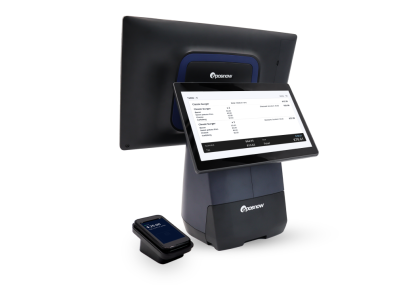Hiring Staff for Restaurant: Find the Perfect Fit
As a business owner, you already know that customer satisfaction is crucial to the success of your business. But did you know that making customers feel valued and appreciated can not only increase their satisfaction, but also drive customer loyalty? That's right! When customers feel valued, they're more likely to stick around and keep coming back for more.
So, are you ready to show your customers that you truly care and make them feel valued? Great! Let's dive into the world of customer appreciation and see how you can take your business to new heights by making your customers feel like they're the "cream of the crop" in your business.
Step 1: understanding your customers
As a business owner, you want to make sure a valued customer is receiving the best possible experience. To do this, you need to first understand what your customers expect and what delights them. This can be achieved through various methods such as gathering feedback, analyzing customer data, and engaging with them directly.
Identifying customer needs and expectations
To provide the best possible experience, it's important to understand what your customers expect. You can do this by asking for their feedback through surveys, conducting focus groups, or just simply asking them directly. This will give you valuable insight into what they want and need from your business.
Gathering feedback from customers
Gathering feedback from customers is a crucial step in understanding their expectations. By asking for their honest opinions, you can find out what's working well and what areas need improvement. This information can be used to enhance your customer experience and increase customer satisfaction.
Analyzing customer data
In addition to gathering feedback, it's also important to analyze customer data to understand their preferences and behaviors. This can be achieved through various tools such as customer relationship management (CRM) systems, which track customer interactions and provide valuable insights.
Step 2: Personalizing the customer experience
Personalizing the customer experience is a key factor in making customers feel valued and appreciated. A personal touch can go a long way in building customer loyalty and improving business success. Here's how you can personalize the customer experience:
Using customer name and preferences
Using a customer's name and remembering their preferences is a simple yet effective way to show appreciation. Whether it's through a handwritten note or remembering their preferred coffee order, this personal touch shows that you value them and their business.
Offering customized products and services
Offering customized products and services is another way to provide a personal touch. By tailoring your offerings to meet the specific needs and preferences of individual customers, you can show that you truly care about their experience and satisfaction.
Providing personalized attention and support
Providing personalized attention and support can make a big difference in how valued a customer feels. Whether it's through extended business hours to accommodate their schedule, or offering one-on-one support, personalized attention and support will build trust and establish a strong relationship with your customers.
Step 3: Showing appreciation through actions
Sometimes the smallest gestures can have the biggest impact in making a valued customer feel appreciated. Here are some ways you can show your customers or clients that you care and appreciate their business.
Expressing ratitude and acknowledging customer loyalty
Expressing gratitude and acknowledging customer loyalty is a simple yet effective way to show appreciation. Whether it's through a personalized thank you note, a special offer, or just a friendly phone call, these gestures show your customers that their loyalty is appreciated and valued.
Offering incentives and rewards
Incentives and rewards are a great way to show appreciation and drive customer loyalty. Whether it's through a loyalty program, special promotions, or exclusive offers, these incentives provide added value and show your customers that their business is appreciated.
Providing exceptional customer service
Providing exceptional customer service is the foundation of any successful business. By going above and beyond to resolve customer concerns and address their needs, you can create a positive and memorable customer experience. This, in turn, will increase customer satisfaction and drive customer loyalty.
By showing appreciation through actions, you can create a positive and memorable customer experience that will leave a lasting impression. This will not only increase customer satisfaction, but also drive customer loyalty and improve your business success.

The Complete Restaurant POS System
Evolve your hospitality business using the power of POS system technology.
Step 4: Onboarding new employees
Once you've found the perfect candidate (or team of candidates if you're hiring seasonal workers) for your restaurant, the next step is to onboard them onto your team. Onboarding is an essential process for introducing new restaurant employees to your restaurant business and setting them up for success.
Intro to culture 101:
The first step in the onboarding process is to provide your new employee with an introduction to the restaurant and its culture. Make sure they understand the values and goals of the restaurant, as well as the role they will play in achieving those goals. This can be done through an orientation session or through one-on-one meetings with their supervisor or mentor.
Intro to the restaurant 101:
We know you’ve got this covered, but you must go through all the health and safety protocols for all your new staff members: from emergency exits, to hand washing stations, to what the process is if they are ill and can’t come to work.
Intro to tech 101:
Next, provide your new employee with the necessary tools and training to perform their job effectively. This may include training on the restaurant POS system and payment processing services, as well as any specific software or equipment used in your restaurant. Be sure to allow ample time for training and provide ongoing support and feedback as needed.
Clear expectations and goals:
It's also important to establish clear expectations and goals for your new employee, both in terms of their job responsibilities and their performance. This can be done through a job performance review or through regular check-ins with their supervisor.
Create a positive work environment:
Finally, make sure to create a positive and welcoming work environment for your new employee. This can include introducing them to the rest of the staff, providing opportunities for team-building and social events, and offering any necessary resources or support to help them succeed.
Onboarding new employees is an important part of the hiring process for restaurant employees. By taking the time to properly onboard your new staff, you can set them up for success and help them become a valuable member of your team.
Step 4: Retaining your restaurant employee
A strong restaurant staff is the backbone of any successful restaurant, and retaining top talent is key to long-term success. So how can restaurant owners ensure that their staff is happy, motivated, and committed to their restaurant? Here are a few tips:
Offer competitive wages and benefits:
Competitive wages and benefits are essential for attracting and retaining top talent in the restaurant industry. This includes offering fair pay, health insurance, retirement plans, and other benefits that show your staff that you value their hard work and dedication.
Offer job security:
In the restaurant industry, job security can be hard to come by. However, providing your staff with a sense of security can go a long way in retaining top talent. This can include offering stable schedules, providing opportunities for advancement, and investing in your staff through training and development programs.
Foster a sense of community:
In addition to creating a positive work environment, fostering a sense of community can help your restaurant staff feel connected and committed to your restaurant. This includes providing opportunities for team bonding, encouraging open communication, and showing your staff that they are an important part of the restaurant community.
By implementing these strategies, restaurant owners can create a happy and motivated restaurant staff that is committed to the success of their restaurant. Remember, retaining top talent is key to success in the restaurant industry, so don't underestimate the importance of investing in your staff!
Step 6: Managing staff performance
Once you've hired and trained your restaurant staff, it's important to manage their performance to ensure that they are meeting your expectations and providing a high level of service to your customers. Here are a few tips for managing staff performance:
Set clear expectations:
Setting clear expectations is key to managing staff performance in the restaurant industry. This means establishing clear standards for customer service, food quality, and other key performance indicators. You can use tools such as checklists and training materials to ensure that your staff understands your expectations and is prepared to meet them.
Provide ongoing feedback:
Providing ongoing feedback is essential to ensuring that your staff is meeting your expectations and providing a high level of service. This includes providing positive feedback for a job well done, as well as constructive criticism when necessary. You can use tools such as performance reviews and regular check-ins to provide feedback to your staff.
Use a hospitality POS to monitor performance:
An advanced POS system for hospitality businesses can be a valuable tool for managing staff performance in the restaurant industry. These systems can track sales, customer feedback, and other key performance indicators, allowing you to identify areas for improvement and provide targeted feedback to your staff. You can also use a POS system to monitor staff performance in real-time, making adjustments as needed to ensure that your staff is providing the best possible service.
By following these strategies, restaurant owners can effectively manage their staff performance and ensure that their restaurant is providing the best possible service to their customers. Don't underestimate the power of effective performance management – it can be the difference between a good restaurant and a great one!
Dishing up our final thoughts
Well, congratulations! You made it to the end of our guide on hiring and managing staff for your restaurant. We hope you found it helpful and informative.
Remember, hiring the right restaurant staff is key to the success of your business. It's not just about finding someone who has the technical skills, but also someone who is a great fit for your restaurant's culture and values. Take your time during the hiring process to find the best candidates and don't be afraid to ask for help.
Once you have your team in place, it's important to prioritize their job satisfaction and provide the necessary resources for them to succeed. Keep in mind that happy employees are more likely to stick around, which will save you time and money in the long run.
So, to all the job seekers out there: don't underestimate the power of working in the restaurant industry. It can be a rewarding and fulfilling career with endless opportunities for growth and development. And to all the hospitality owners: good luck with your hiring process and creating an amazing team. Your staff is the backbone of your restaurant and investing in them is always worth it.
Want to learn more about launching and running your own restaurant? Take a look at our additional resources today!
Find out how our POS system can help your restaurant succeed. Talk to our team of experts today.




